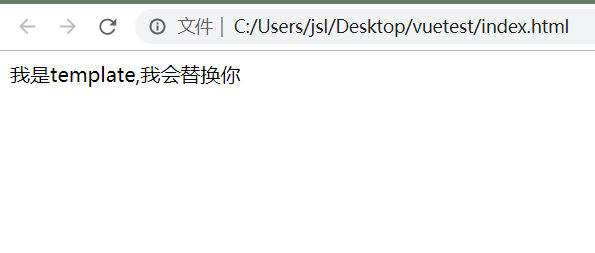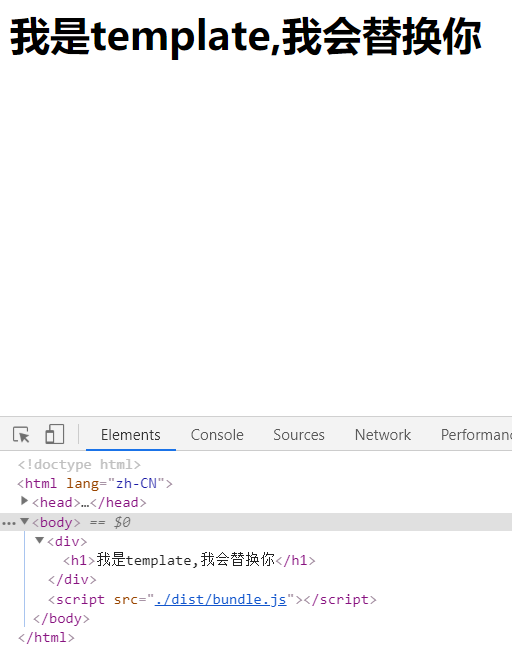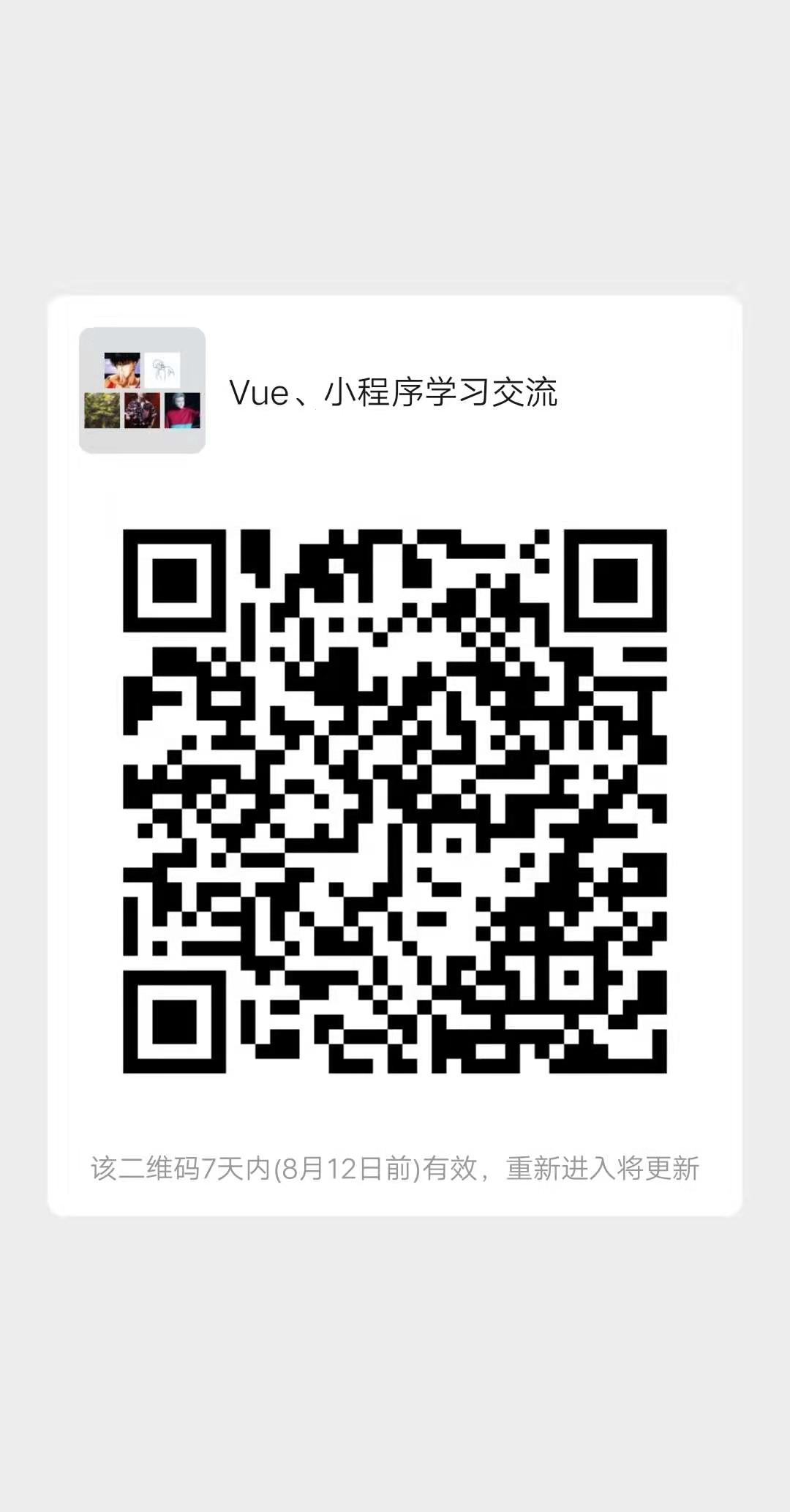第一步:是将vue挂载到index.js中的id为app的dom中
main.js:
import Vue from 'vue'; new Vue({ el: "#app", })
index.html
<!DOCTYPE html> <html lang="zh-CN"> <head> <meta charset="UTF-8"> <title>Document</title> <link rel="stylesheet" href=""> </head> <body> <div id="app"> </div> </body> </html>
(一般这个文件不再改变)
第二步:是了解一个编译规则,tremplate中的内容会替换el中dom的所有东西
import Vue from 'vue'; new Vue({ el: "#app", template:`<div>我是template,我会替换你</div>`, })
<!DOCTYPE html>
<html lang="zh-CN">
<head>
<meta charset="UTF-8">
<title>Document</title>
<link rel="stylesheet" href=" ">
</head>
<body>
<div id="app"></div>
<script src="./dist/bundle.js"></script>
</body>
</html>

第三步:在外部编写一个组件,在Vue实例中注册一个子组件,使用到template中
import Vue from 'vue'; const App ={ template:`<div><h1>{{message}}</h1></div>`, data(){ return{ message:'我是template,我会替换你' } } } new Vue({ el: "#app", template:"<App/>", components:{ App } })

第四步:把子组件对象app抽离出去,到app.js中,并用export default导出,在main.js中导入
import Vue from 'vue'; import App from './vue/app'; new Vue({ el: "#app", template:"<App/>", components:{ App } })
export default { template: `<div><h1>{{message}}</h1></div>`, data() { return { message: '我是template,我会替换你' } } }
第五步:将template与script分离,即引入.vue文件
<<template>
<div>
<h1>
{{message}}
</h1>
</div>
</template>
<script>
export default {
data() {
return {
message: '我是template,我会替换你'
}
}
}
</script>
<style lang='less' scoped>
</style>
import Vue from 'vue'; import App from './vue/app.vue'; new Vue({ el: "#app", template:"<App/>", components:{ App } })
大家可以进群交流学习,老师讲的十分仔细!

vue学习链接